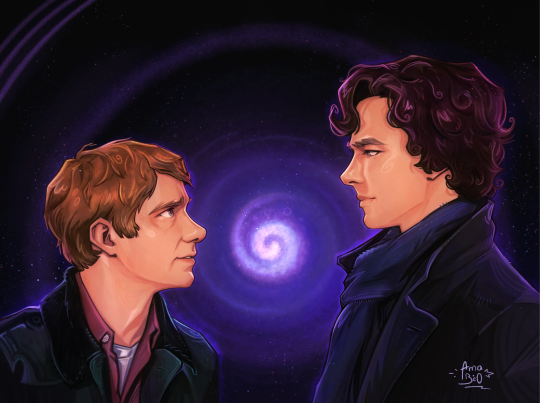Text
Sequelae - Johnlock fic

Read it here.
Sherlock wanted more, of course. Wanted more with every ounce of blood and sinew in his body. The thought of all of John’s skin against all of his occupied all his time and mind space. Wish fulfilment, in every sense.
Then he would think about the scarring on his back. Scars that John didn’t know about.
Mind the tags, friends.
@missdaviswrites
@fearlessdiva930
@amindamazed
@hubblegleeflower
@pippn-frodo
@quantum-sparrow
@weneedtotalkaboutfic
@addictedstilltheaddict
@prettyrealisticjohnlockfanart
@daringlydomestic
@totallysilvergirl
@pipmer
@otter-von-bismarck
@shirleycarlton
@onwallsjcfwrites
@stellacartography
@keirgreeneyes
@cirquedereve
@seriouslymarythough
@peanitbear
@missdeliadili
@topsyturvy-turtely
@safedistancefrombeingsmart
@lisbeth-kk
@thegirlfromthesouth
@ohnoesnotagain
@whodwantmeasaflatmate
@copperplatebeech
@whatnext2020
@helloliriels
@iamjustreading
@thegildedbee
@gwendelaneyisjohnlocked
@jolieblack
@ninasnakie
@meandhisjohn
@binx72
91 notes
·
View notes
Text
Still obsessed with Arthur Conan Doyle’s letter to Bram Stoker gushing about how wonderful a book Dracula is, but particularly how it makes such a good template for leaving fic comments, so I’m gonna to a BREAKDOWN:
Just say you loved reading it - “I am sure that you will not think it an impertinence if I write to tell you how very much I have enjoyed reading Dracula.”
Comment on a detail of the craft or structure that impressed you - “It is really wonderful how with so much exciting interest over so long a book there is never an anticlimax.“
Comment on how it emotionally affected you - “It holds you from the very start and grows more and more engrossing until it is quite painfully vivid.”
SHARE YOUR BLORBO FEELINGS - “The old Professor is most excellent and so are the two girls.”
Show appreciation for them as an author - “I congratulate you with all my heart for having written so fine a book.”
Next time you don’t know what to say on a fic you enjoyed, just use the ACD method~
46K notes
·
View notes
Text

"Nobody writes of Holmes and Watson without love." - John le Carré
17K notes
·
View notes
Video
youtube
Johnlock-Words Unspoken
3K notes
·
View notes
Text

watson = dashing?? sherlock = silly??? its canon!!!!!!
2K notes
·
View notes
Text




stuff
3K notes
·
View notes
Text



John loves Craig!Bond and has made Sherlock watch "Casino Royale" and "Skyfall" many, many times.
The Science of Affection: Post #162 Archive | Previous | Next
133 notes
·
View notes
Text
Sherlock 🍵 Watson

🌀🌀🌀🌀🌀🌀
585 notes
·
View notes
Text

Whirlwind by DiscordantWords
Johnlock Love Letters #2354
John, former storm chaser, has settled into a comfortable new life. There's only one problem: John's already married. John reluctantly makes a trip to see Sherlock in the hopes of finalizing their divorce. John finds himself talked into riding along after one last storm. Twister AU
38 notes
·
View notes
Text

The lovely DiscordantWords placed a winning bid in this year's @fandomtrumpshate auction, and in thanks I made a cover for their really wonderful fic Unremarkable - which you really should go read.
242 notes
·
View notes
Text

Nervous about leaving a comment or lacking inspiration after a streak? Use the patented
✨ FANFICTION COMMENT GENERATOR ✨
and send a personalized note!
121 notes
·
View notes
Text
Probably never gave you a thought. All fine and smelling of perfume. They were born beautiful and mistake being beautiful for being good.
—Megan Whalen Turner, Return of the Thief, in the Queen’s Thief Series
69 notes
·
View notes
Text

Let's eat some soouuup!
13th of @fluffbruary, Bubbles!
Much love <3
146 notes
·
View notes
Text
Reblog daily for health and prosperity

270K notes
·
View notes
Text
😍

What John loved the most were those unique moments where, in the privacy of his room, the hardness of Sherlock expression softened, the stiffness of his body position would melt into his arms and those cupid bow lips would curl up into a smile the young detective only saved for his captain. ♥️
I love drawing these two. Also, English is not my first language, but I wanted to write something. 👉👈
184 notes
·
View notes

